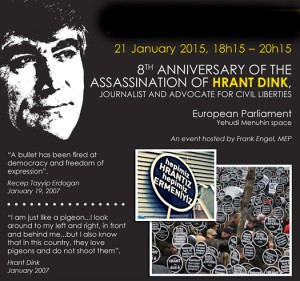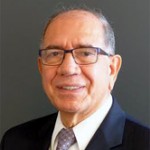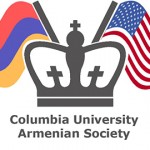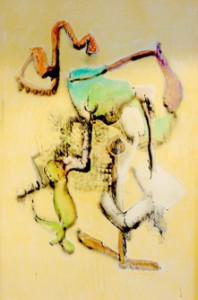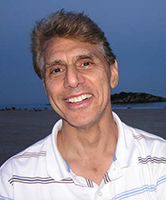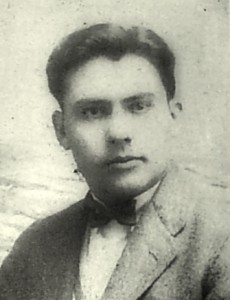 Vartan Derad
Vartan Derad
Mr. Derad, born in historic Armenia in September 7, 1900, at the age of thirteen immigrated to the United States where he furthered his education and attended the Emerson college of Oratory in Boston and the Boston University Law School, where he earned his Juris Doctorate.
Mr. Derad became an active leader and public speaker, also editor of Armenian newspapers, first in the New England area and then in Southern California. He authored many books and contributed numerous articles to various English papers. In the political field, he had managed many local elections, having spoken from the same platform with many prominent candidates for office, such as Thomas E. Dewey former New York State Governor and Jasper McLevy, former famed Mayor of Bridgeport, Connecticut, among others. Mr. Derad held responsible positions in the Armenian Church structure and for four years served as secretary to the Armenian Church of America. He was an ardent member of the Social Democrat Hunchak Party, maintaining various high level positions of Party in the East as well as the West coast of the United States. He had also been a devoted student of economics and political science and a close follower of world affairs. Mr. Derad passed away in 1971.
Tomorrow’s Horizon, written in the midst of World War II, was Mr. Derad’s analyses of the depths of the national and international, economic, political and social problems which caused the war, and was an aim to demonstrate the logical beginning for a world-wide union of nations (a United Nations) and to peacefully avoid future conflicts. A beginning where the belief that real democracy, personal liberty, individual rights and political independence can survive and make the machinery of a government function as the servant of the people, instead of being the master over the people that constitutes the nation.
With 2015 marking the 100th anniversary of the Armenian Genocide as well as the 70th anniversary of the United Nations, Mr. Derad’s analysis of world affairs, primarily questions in dealing with small nations and remembering and learning from historical political blunders made by “BIG†powers, resonates in today’s world. MassisPost, therefore presents a chapter entitled The Oppressed Nations and National Strength from Mr. Derad’s book Tomorrow’s Horizon.
S.K.
The Oppressed Nations and National Strength
We are not going to let history of the oppressed nations repeat itself. The liberation of oppressed peoples is constantly proclaimed during the more chivalrous phases of the war. The United Nations who will hold the future destinies of the small, conquered and enslaved nations on the peace table must refrain from further political sleights.
The democracies will and should have the right to demand an accounting of the statesmen into whose hands the labor and agonies of millions of men placed free disposition over the fortunes of conquered nations. The economic aspirations of the international financiers must cease to exist in order that the fire of independent nationalism will not burn out in international intrigues and again be forgotten forever as it happened in Versailles after the first World War.
It is very important to have foresight and not hindsight when the question comes to deal with small nations and remember one of the past political blunders as the poor Armenians were treated after one million Armenian men, women and children were brutally massacred, and tens of thousands of women and girls were carried off into the most abominable slavery. Two hundred thousand Armenians of military age, who might have helped to defend the frontier of a real Armenian state, were unhappily slain and the history tells us how the main cause of Armenia’s woes were the torturous and immoral diplomacy of Europe.
The pioneers of democracy and Christianity failed to understand the cynical treatment which Armenia did have at the hands of the foreign offices of the European Powers. The chief obstacle which Armenia had to encounter in winning for itself “a place in the sun” had lain in the fact that its legitimate boundaries had conflicted with the boundaries of the zones with which the Allied Powers had checker-boarded Asia Minor.
The Allies hesitated to talk too much about Armenian independence while Romanoff Russia was in the war and when imperial Russia vanished from the horizon, there was no good reason why the Allies should not then have recognized the independence of those Armenians who hitherto had lived under Russia and forgetting Turkey who still was the “sick man of Europe.”
Yes, the reason was very obvious. Downing Street and Quai O’Orsai were flirting with Deniken at the time, and Denikin, who desired a “great, inseparable Russia,” would have none of an independent Armenia. And why?
Because the British wanted Armenia’s Black Sea and Caspian gate which might link her up with the rest of the world; the French wanted her promised outlet to the Mediterranean on the south. More than that, the Arxes valley and the mineral wealth of the Karabakh mountains the British foreign office preferred to vest in the hands of the nomad Moslems, who in all probability, would shortly come under British influence and custodianship.
The historical truth remains that the Powers of Europe were only interested in Armenia and the poor Armenians to the extent of how much and in what ways and means they would have benefitted if they had made an approach to this land and the lands of other small nations who suffered and sacrificed, who bled and died in order that the BIG powers and wealthy lords live and be happy.
History never recorded such a betrayal as that of Armenia, whose body was crucified by the Turks and whose faith was destroyed by the BIG POWERS after the first World War.
The great need of the world today and after this war is leadership and there can be no higher tribute to international unselfishness and kindness than the fact that every nation in the world is willing to accept the proposals and just dealings of such a leadership. Let us not cause the downfall of democracy by a provincial, distrustful and disunited play and overthrow the civilization in the hands of greedy, selfish money mongers and demagogues.
Anthony Eden, British Secretary of State for Foreign Affairs, in his July (1942) speech said a number of things that also should serve as inspiration during and after trying periods ahead for the United Nations. Note the following: “Let there be no doubt in the minds of our enemies. Whether the struggle be long or short,’ we, together with our allies, are in this war to the victorious end. No temporary setback or disappointment or even lost battles can alter our resolution to continue the fight against the dictator powers until they are all finally disarmed and rendered powerless to do further injury to mankind…
“We must either build an orderly, law-abiding international society in which each nation lives and works freely without fear or favor or we shall be destroyed in a welter of barbaric strife…”
Now we have come to the point where the free thinkers in every nation must express himself in terms of internationalism, because the spirit of nationalism now in effect forces each nation to watch every other with suspicion, jealousy or menace. And what has been the result?
“Honor and vital interests of our nation,” exclaims the blood-thirsty politician or the industrialist of each and opposing nation, “are in danger. We must fight … carryon the war … war is human.” Then the poor dupes begin to butcher one another at the word of command from higher up. The schools that hold the future generation of mankind, become not only the training ground, but actually a recruiting ground for the army with the spirit of severe nationalism.
The motto of the school of “my country, right or wrong,” is no longer a practical menu that can be served on the desks of our school children. “My country, right or wrong,” is but the highest degree of egotism, in common with the name HITLERISM. Had this been the motto of General Washington and his compatriots the United States would still be a part of the British Empire.
History proves and the events testify, that in the name of NATIONALISM and without the spirit of internationalism we always have had wars, butchering of brothers by brothers. A torrent of blood has flown from the deep, damned war-wound in the breast of the working class. When war is declared, the command is given immediately “Kill! Slay! Slaughter! Plunder! Destroy! Rape! and crucify in the name of NATIONALISM.”
Robert G. Ingersoll once wrote about the agonies of war, created by the fire of stupid nationalism, combined with the greed of international industrialists or war-mongers:
“Nations sustain the relations of savage to each other …no man has imagination enough to paint the agonies, the horrors, the cruelties, of war. Think of sending shot and shell crashing through the bodies of men. Think of the widows and orphans! Think of the maimed, the mutilated, the mangled …”
Narrow and shortsighted nationalism made the Turks massacre the Armenians during the World War I, but in 1942, this time the turn was shifted to the helpless Greeks. In “Life” magazine, August 3, 1942, issue, there appeared some heartbreaking photographs of dying Greeks, showing how the famine and death rode into Greece at the heels of the Nazi conquest. These pictures were collected and privately printed in April with the legend SECRET-NOT FOR PUBLICATION, by exiled Greek Minister of Information, A. Michalopoulos.
The Germans came to Greece as conquerors. They picked it clean as a bone and then announced that the Third German Reich has no responsibility for the feeding of such conquered nations as Greece.
The last state of Greece was described as follows by Associated Press Correspondent, Richard G. Massock:
“Stinking, ragged columns of men, women and children, who no longer wash now that there is no soap, pick over the garbage of the Germans and Italians. The poor lie in squalid homes, too weak to move, their swollen bodies covered with sores. In processions, the Athenians go to the city dumps. When one finds a sardine or other food can, he cleans the inside with his tongue as a cat would do. The hospitals are over-crowded, sometimes with three or four starving patients in a bed. The courtyards of the morgues are filled with naked bodies. Three hundred bodies at a time are buried in large pits, without lime.
“When people die, relatives place the corpses in the gutters without reporting the deaths so that they won’t have to surrender the bread cards of the deceased. The tragedy of Greece is not so much the dead picked up in the streets each morning, as the famine and condemnation to death reflected in the faces of those dragging their starved bodies through the streets.”
As to what a terrible war is doing to an innocent, unarmed and guiltless civilian people at their own homes, on their own city or country streets, here the report about Greece carries on its tale in more details in the same issue of “Life” magazine as how the Greeks had expected to go hungry, but the Germans killed their cattle and took their milk for the occupying German armed forces. They took their boats so that they could not even fish. When an occasional wheat boat arrived from Sweden, Switzerland, Canada, Turkey, they claimed that it was German wheat and confiscated more Greek food supplies.
The International Red Cross continued the report, fed about 700,000 people in Athens a daily bowlful of olive oil, rice and dried vegetables. The price of bread was $4 a pound, butter $18, oil $12, coffee $50, eggs 75c apiece and shoes $100 a pair.
Here is another heart-breaking report, when we are told how people steal and kill for food, husbands abandon wives and children. Citizens lie across the pavements, spitting blood into the gutter. A certain sort of thud means that somebody else has fallen to the pavement. The survivors do not look around.
There are many more bad, inhuman, uncivilized conditions caused by the war under and at the point of the brutal warriors. Thus a war is a plague that afflicts many nations and humanity. It destroys families, kills everyone who raises his or her head in the name of patriotism. In war, even God is forgotten because the churches are bombed and the priests are brutally killed in the churchyards.
In Secretary of State Cordell Hull’s address on July 23, 1942, on the war situation he said: “Governments can and must help to focus the energies by encouraging, coordinating and aiding the efforts of individuals and groups.”
Of course this “helping” philosophy will be put into action only and when the governments, besides being willing to help, also get the cooperation of so-called leading industrial individuals in their own respective .lands. These individuals particularly who are in economic power and have the means of dictating and in many cases, commanding the legislative bodies to do certain things not for the benefit of all the citizens, but for the benefit of the leading lords only. The governments in this case should command these industrial lords to lay down their selfish and money making weapons and extend their hands to the rank and file of the people united as one man without any expectation, ready to help the government direct the national 7efforts to the creation of a lasting peace and preserving the same.
Secretary Hull continues: “In our own country we have learned from bitter experience that to be truly free, men must have as well, economic freedom and economic security, the assurance for all alike of an opportunity to work as free men in the company of free men; to obtain through work the material and spiritual means of life; to advance through the exercise of ability, initiative and enterprise; to make provision against the hazards and human existence.”
History shows us that no nation can enjoy its national peace while its citizens are in the grip of constant fear of economic depression, unemployment, bitter class struggle, strikes and what not.
A free nation will be able to contribute its worthy share to the freedom of the world and to the people of this world when the citizens of this nation are free first, free economically, politically and socially. Free from shallow nationalism and baptized with the spirit of internationalism.
Secretary Hull carries on his speech and says: “One of the greatest obstacles which in the past have impeded human progress and afforded breeding grounds for dictators has been extreme nationalism.
“All will agree that nationalism and its spirit are essential to the healthy and normal political and economic life of a people, but when policies of nationalism, political, economic, social and moral, are carried to such extremes as to exclude and prevent necessary policies of international cooperation, they become dangerous and deadly.
“Nationalism, running riot between the last war and this war, defeated all attempts to carry our indispensable measures of international economic and political action, encouraged and facilitated the rise of dictators and drove the world straight toward the present war.
“During this period, narrow and shortsighted nationalism found its most virulent expression in the economic field.
“It prevented goods and services from flowing in volume at all adequate from nation to nation and thus severely hampered the work of production, distribution and consumption and greatly retarded efforts for social betterment.
“No nation can make satisfactory progress when it is deprived, by its own action or by the action of others, of the immeasurable benefits of international exchange of goods and services.â€
The biggest and most cruel thing in the world is WAR and the way it is conducted. The fundamental reason for war is the constant struggle against want, and all its concomitants. Hence modern wars are essentially wars for foreign markets for the benefit of the ruling class or for the selfish greed of the stronger nation, which often leads to the destruction of a former powerful industrial nation, or nations, and as a result of that all nations during peace time if there has ever been a peace time, will live in the shadow of threatened coercion of war, in the shadow of fear that someday the other nation will get stronger and strike a deadly blow.
The Oppressed Nations and National Strength

